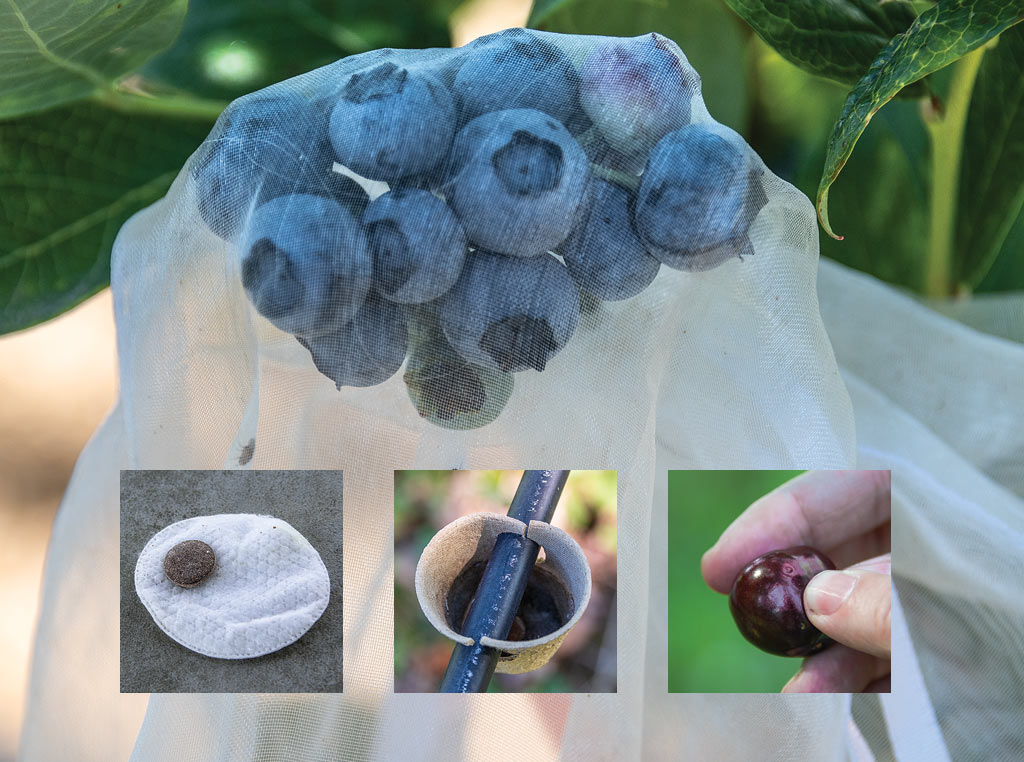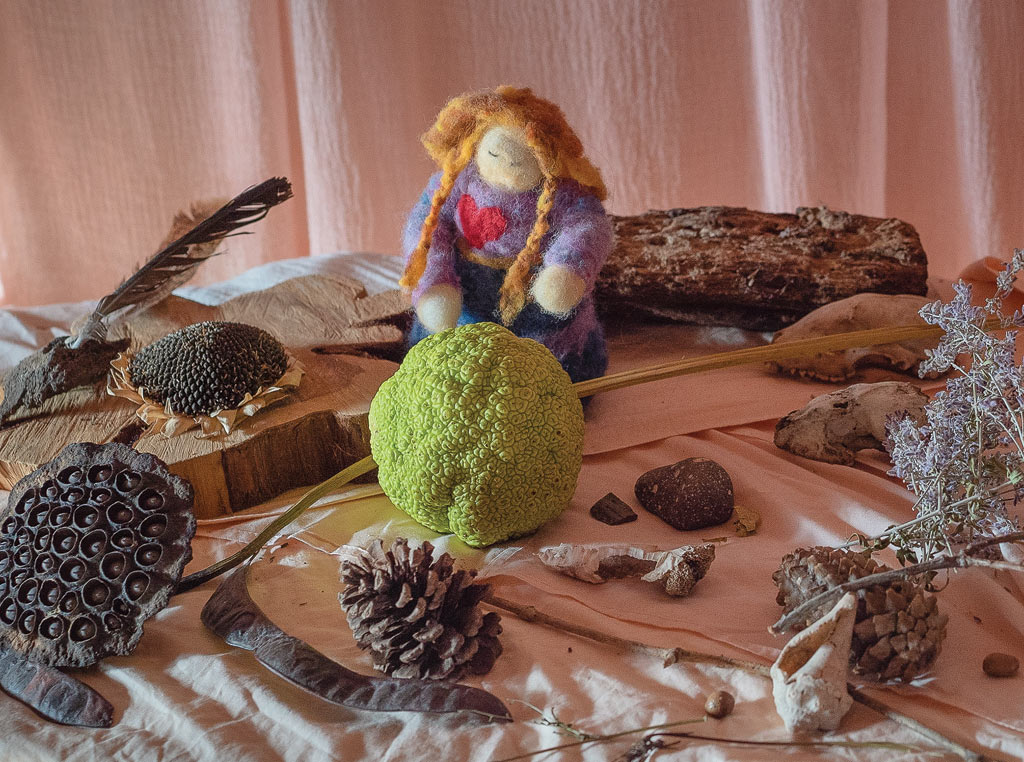
Above. Spotted wing drosophila (SWD) in a feeding study at Oregon State. A tablet of decoy material fools flies into laying their eggs where they will dry out and die. In cherries, biodegradable cups position the decoy under drip emitters. SWD damage appears as a pinhole-like injury over soft fruit.
Agriculture, Education March 01, 2022
Following Their Noses
Innovative decoy cuts insecticide use dramatically.
Vaughn Walton and his team at Oregon State University are using spotted wing drosophila’s uncanny sense of smell against it.
The tiny flies cause massive damage by sniffing out ripening fruit where they can feed and lay their eggs. Walton has led the development of a lure that mimics the aroma of ripening fruit so well that it inspires spotted wing drosophila (SWD) females to lay their eggs into the powdery attractant, where they dry up and die.
The lure is on its way to commercialization as Decoy. Field trials indicate that it can reduce egg-laying in fruit by 50% to 95% and help growers cut insecticide applications by as much as 85%.
Big trouble. The presence of just a few drosophila larvae in berries or thin-skinned fruit like cherries and plums can trigger rejections of entire truckloads of fruit. That’s why the discovery of SWD in Florida strawberries in late 2009 triggered a massive industry effort to find controls—an effort that lured Walton, a South African expert in using pheromones to attract mealybug, to shift his attention to SWD.
Part of the problem with SWD, Walton says, is its short life cycle. The fly can mature from egg to adult in just 10 days.
“So you have a beautiful crop on Friday, and on Monday you’ve lost 20%,” he says. “And when you send the 80% you harvested to the packing house, if they find a larva, they take another sample, and if that’s got a larva in it, they take another and if there’s a larva in that one, it’s out. You’ve lost everything in just a couple of days.”
As a result, many growers sample fruit every other day as it matures, spray frequently to keep populations under control, and scramble to harvest fruit before the drosophila causes damage.
Another concern is that the huge populations and short life cycle of the fly, coupled with the need for frequent insecticide applications, will speed the development of insecticide resistance.
“Resistance usually takes about 10 years with fruit flies,” Walton notes. “Our growers are really worried about it.”
A lure would provide growers with an alternative to chemical insecticides and allow them to increase the interval between sprays by several days or more. That has economic, handling, and resistance management benefits.
“We did this in blueberries in 2020 over a 60-day period and the grower saved 85% of their pesticide applications,” Walton says. “Now you’re eliminating something like four or five pesticides over the period of three weeks, and you’re still maintaining the quality of the fruit.”
Breakthrough. Walton and his team tested hundreds of compounds to attract SWD. They found one that attracted twice as many flies as any other material, including mashed-up ripe fruit.
He worked with Gabriella Tait, a researcher in northern Italy, to continue developing the technology. Tait joined Walton’s lab in Oregon and is listed on the patent for the attractant system.
Walton says deploying Decoy will vary by crop so the bait material can be dampened by daily irrigation, then allowed to dry. In blueberries, that means placing tablets in a dispenser along the drip line, while in cherries, growers will hang cups under emitters about every three weeks. ‡
Read More

SPECIALTY/NICHE, EDUCATION
Mapping with Miss Blue
Blueberry Morningsnow helps kids connect to their favorite nature place.

AGRICULTURE, FARM OPERATION
Dropping the Water Anchor
Solar pumps and poly piping move prime water – and the herd – to prime grazing.

